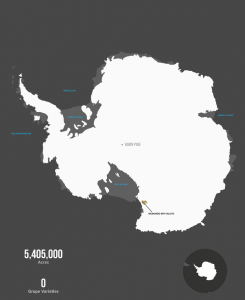 Wine production does not usually come to mind when one thinks of Antarctica. Many wine regions in Argentina and New Zealand are beginning to dry up due to global warming, and are now turning to Antarctica’s boundless landscape as a potential ice wine region.
Wine production does not usually come to mind when one thinks of Antarctica. Many wine regions in Argentina and New Zealand are beginning to dry up due to global warming, and are now turning to Antarctica’s boundless landscape as a potential ice wine region.
There is one person in particular who is currently experimenting with the production of wine along the icy waters of Antarctica and polar bears. His name is James Pope, and he is using the salty cool regions and all they have to offer in order to cultivate Riesling, Vidal and Seyval Blanc.
The salty soils found in Antarctica give the wine a mixture of properties that fall on the more basic side of the pH scale. Although it is a vast region, most of the land is comparable to sand, which makes it extreme difficult to grow grapes. However, Pope has turned to the McMurdo Dry Valleys, which have shown some promise in developing successful vineyards.
Most of the “icy wines” produced by Pope contain a blend of citrus and honey flavors, as well as a subtle hint of sardine and volcanic scent. Although these combinations may seem uncommon, sommeliers describe these wines as “ haunting.”
There are many other interesting features to the soils in Antarctica. As most people are aware, these soils are permafrost for most of the winter months, and it is only during summer that the ground can allow for roots to be planted. However, the frost only melts for about a foot, which in turn makes the grape vineyards grow horizontal roots.
Another unique factor found in these vineyards is the presence of penguins. Given that organic matter is hard to acquire in that part of the world, Pope has gotten creative and is using penguin excrement as fertilizers in order to supply the vineyards with vitamins and other necessary supplements.
The wine unique tasting experience can be further enriched by joining Pope and other visitors in the legendary Shackleton’s Hut, where one can take in the breathtaking views of Antartica and appreciate a new experience of wine making.
